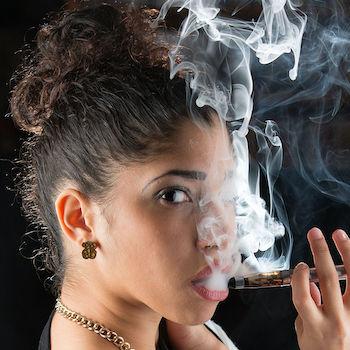Despite the CDC's recent confirmation that vaping nicotine wasn't responsible for an outbreak of lung illnesses around the US, the campaign against e-cigarette liquid hasn't ceased. Some anti-smoking groups, politicians and public health experts continue pushing to ban most flavored liquids used in e-cigarettes, because they supposedly entice non-smoking teenagers to take up vaping.
In order to save children from a lifetime of addiction, so the argument goes, we need to ban flavored e-liquids. Forbes contributor and Duke University behavioral scientist Peter Ubel summed up the case against e-liquids in a recent column:
“All these candy-like flavors need to be banned. There is no public health justification for allowing companies to hook adolescents on their addictive products.”
Preventing teen vaping is a worthwhile public health cause, but very few students use e-cigarettes. Of those that do, more than 50 percent are vaping nicotine-free liquid. Meanwhile, more than 400,000 adults are killed every year by smoking-related diseases. Banning flavored e-liquid would do nothing to stop teen vaping while making it much harder for smokers to switch to far less harmful e-cigarettes.
The problem with banning flavored vapes
Contrary to claims in the popular press, children aren't the only people who like sweet flavors. Adult smokers also like things that taste good, believe it or not, and access to a wide variety of e-liquid flavors makes the switch to vaping much easier for them. The research on this question is limited for now, but several studies support the idea that smokers are more inclined to give vaping a try if they can find a flavor they enjoy.
In this 2016 study, for instance, flavor selection clearly influenced vaping rates among 88 current smokers. According to the researchers, “the present study suggests that flavorings per se will make a difference in the adoption patterns of e-cigarettes by current smokers.” In a 2015 survey of 1,200 smokers, respondents likewise reported they would be less inclined to try vaping if their flavor options were restricted. More tellingly, another study conducted the same year showed that flavored liquids appealed to adult vapers and smokers, though non-smoking teens had no interest in e-cigarettes, no matter what flavors they came in.
Why do flavored e-cigarettes appeal to adults? As the authors of 2018 study explained:
“... vaping was frequently discussed [by ex-smokers] as enjoyable and pleasurable in its own right … Flavors and smells, the sensory aspect of vaping, were an important and pleasurable aspect ...”
The teen vaping epidemic in context
While everyone agrees that teenagers have no business using nicotine, most of them have no interest in vaping anyway; those few who do vape are former or current smokers. “Non-smoking high school students are highly unlikely to use e-cigarettes … By contrast, current smokers are likely to use e-cigarettes and on more days,” noted the authors of a 2016 study. A January 2020 paper evaluating the National Youth Tobacco Survey (NYTS) reached a similar conclusion. Reviewing the smoking and vaping habits of 20,189 teenagers (ages 9-19 years old), the researchers found that:
“In 2018, 81.4% of students had not used any tobacco or vapor product in the p30d [past 30-days], and 86.2% had not vaped in the p30d … The majority of vapers ... were concurrent p30d or ever tobacco users. About 4% of students were tobacco naïve and vaped in the p30d, but few (0.4%) vaped regularly on 20 or more days.
The UK's Action on Smoking and Health reported similarly low teen vaping rates in June 2019:
More than three quarters of 11-18 year olds have never tried (76.9%) or are unaware of e-cigarettes (6.6%) … Vaping is much less common among young people who have never smoked. A large majority of never smokers aged 11-18, 93.8% in total, have either never used an e-cigarette (87.8%) or are not aware of them (6.0%). Of young people aged 11-18 years old who have never smoked, 5.5% have ever tried e-cigarettes, 0.8% are current vapers, only 0.1% vape more than once a week, and not a single never smoker reported vaping daily.
The solution
As epidemics go, these are pretty low numbers. But if we want to cut teen vaping to even lower levels, let's follow the UK's lead (where you can buy e-cigarettes in hospitals) and market vaping as a safer alternative to smoking, which the FDA generally doesn't allow in the US. E-cigarette ad campaigns often feature attractive models and slogans like “take back your freedom,” which play on that universal teenage desire “to look cool.” If we want to disabuse students of the notion that vaping is the hip thing to do, let manufacturers tell the truth and market their devices as smoking cessation tools.




